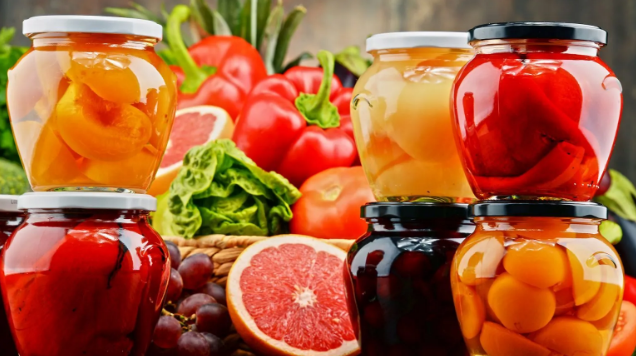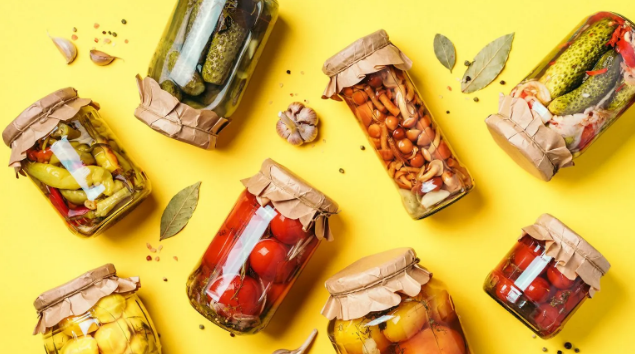
Pickling and fermenting have become increasingly popular in the world, largely due to the growing influence of Asian cuisine. However, many people still lack a clear understanding of the science behind these processes or the differences between them.
Let’s explore the workings of pickling and fermenting, and how you can utilize this knowledge to enhance your business plans.
What is Pickling?
Pickling has been a part of global cuisine for thousands of years, tracing back to the ancient practice of preserving cucumbers in India. The process is straightforward, involving the use of an acid brine to preserve food and add a tangy flavor. Common pickling brines include vinegar, salt water, sugar water, or lemon juice. The food is then soaked in a tightly sealed jar. In the United States, pickled vegetables are the most popular, but fruits, meats, and fish are also common.
What is Fermenting?
Fermenting involves using bacteria and probiotics to transform and preserve food. This method has a long history, with the first recorded instances coming from China nearly 10,000 years ago. During the fermenting process, bacteria convert sugars into acidic compounds, altering the food’s flavor and creating probiotics.
The Growing Popularity of Pickling
Today, pickling is a common trend in the food industry. The market for pre-packaged pickled foods has grown steadily in recent years. By 2020, the global market for commercially pickled vegetables, fruits, meats, and fish was valued at nearly $8.5 billion. Industry analysts expect the packed pickles market to continue expanding at around 3.5% annually from 2019 to 2025, presenting an opportunity for entrepreneurs. Particularly, consumers’ increased willingness to try foreign cuisines has driven interest in pickled foods.

The Most Popular Pickled Food
Surprisingly, pickled cucumbers, while popular in the United States, are not the largest global market for commercially pickled foods. Pickled fruits hold the highest share of this industry, exceeding 45% of the total annual revenue. However, pickled vegetables are projected to show the most growth in the coming years, with an annual increase in demand of 4% through 2025.
Packaging for Pickled, Fermented, and Preserved Foods
Glass jars have long been a favorite for pickling and fermenting, and this remains unchanged. Nearly two-thirds of pre-packaged pickled products worldwide are packaged in glass or plastic jars. Glass jars protect the contents from damaging sun rays and prevent unwanted interactions between the packing materials and the pickled food. Plastic jars are also common, as they are lighter and have a lower risk of breaking, cracking, and leaking. However, given environmental concerns, plastic jars are unlikely to surpass glass jars for pickled foods.
In conclusion, the science of pickling has led to a growing market for pickled and fermented products worldwide, particularly in North America, which consumes nearly half of all pre-packaged pickled products produced annually. If your business wants to capitalize on this market, BOLITE has everything you need to package your pickled products. Glass jars offer clear advantages for packaging pickled foods, and BOLITE offers a variety of options to choose from, including “4L big glass tank for fermented red wine fruit vintage glass water dispensers” with your choice of four different closures. The science of pickling is here to stay, and BOLITE has the jars and lids you need to sell your delicious pickled, fermented, and preserved foods. Contact us today to learn more.

If you’re in the market for a suitable storage and packaging material,
we have thousands of different types of glass products available.
Our professional team is here to support your business and share you valuable experiences.
Feel free to inquire!
Contact Us
Sales Ruby
Email: sales05@xzbolite.com





